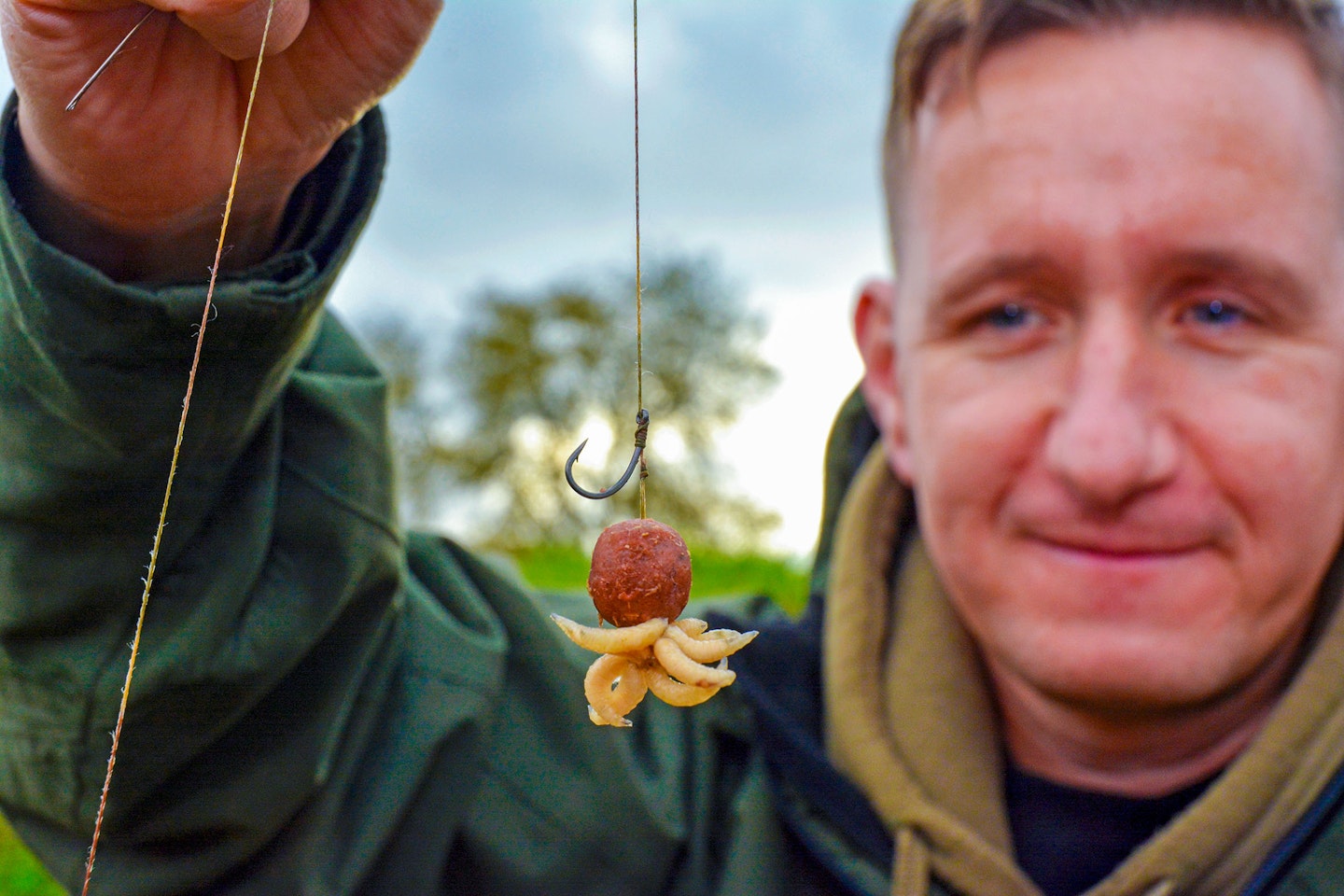The last couple of months have seen some impressive barbel caught from all over the country as they feed up for what could potentially be a long, cold winter.
Like all freshwater species, barbel are cold blooded. That means that their natural metabolism slows down as the water temperature decreases. However, once the temperatures have dropped and stabilised and the barbel have acclimatised, they will feed – if only for short periods each day.
Let’s make no bones about it, barbel fishing in winter can be hit and miss. But there’s no need to put your beloved barbel rods away. If you think carefully about your approach and time your sessions to coincide with likely feeding times, you can still find yourself doing battle with this hard-fighting running water species.
IF YOU LOVE YOUR BARBEL FISHING, YOU NEED TO USE THE BEST BARBEL RODS...

Set realistic goals
Venues with a larger stock of barbel will give you a better chance of catching one. Certain stretches of rivers such as the Trent are particularly prolific, for example, which is why you see lots of catch reports from anglers on them.
If you’re after a large fish on a river with a low stock of barbel you should prepare yourself for a few blank sessions and not judge yourself by what others are catching elsewhere. Some anglers are happy to sit it out all winter for one or two fish, whereas others prefer to be in with a chance of fish every trip. Think about what you want and find a venue to suit.
BARBEL FISHIG CAN BE A WAITING GAME, SIT COMFORTABLY ON ONE OF THE BEST FISHING CHAIRS.
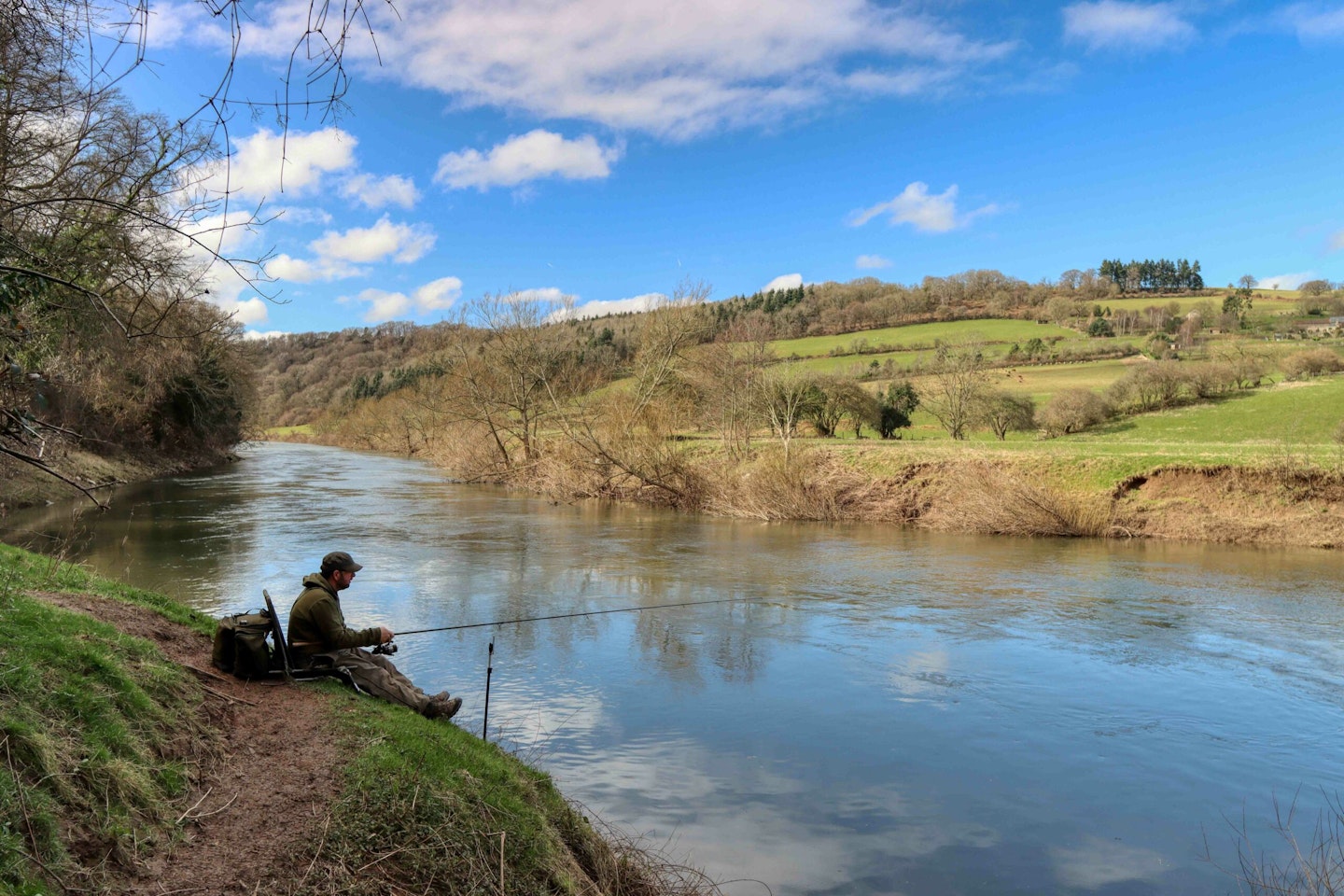
Hemp and casters
Big barbel love casters, but they can prove costly if used in large quantities. A good way to keep the cost down is by bulking them out with cheaper baits such as hemp. Use a baitdropper to introduce a small amount of loosefeed. Let it settle for a couple of seconds before lifting it out to give the bait time to escape close to the deck. Although less likely to be a problem in winter, small fish can prove a nuisance when fishing with casters. A good way to avoid them is to create a more substantial hookbait by supergluing four casters on to a short hair rig.
AREN'T SURE WHAT RIG TO CHOOSE FOR BARBEL FISHING? OUR EXPERT RIG GUIDE WILL HELP.
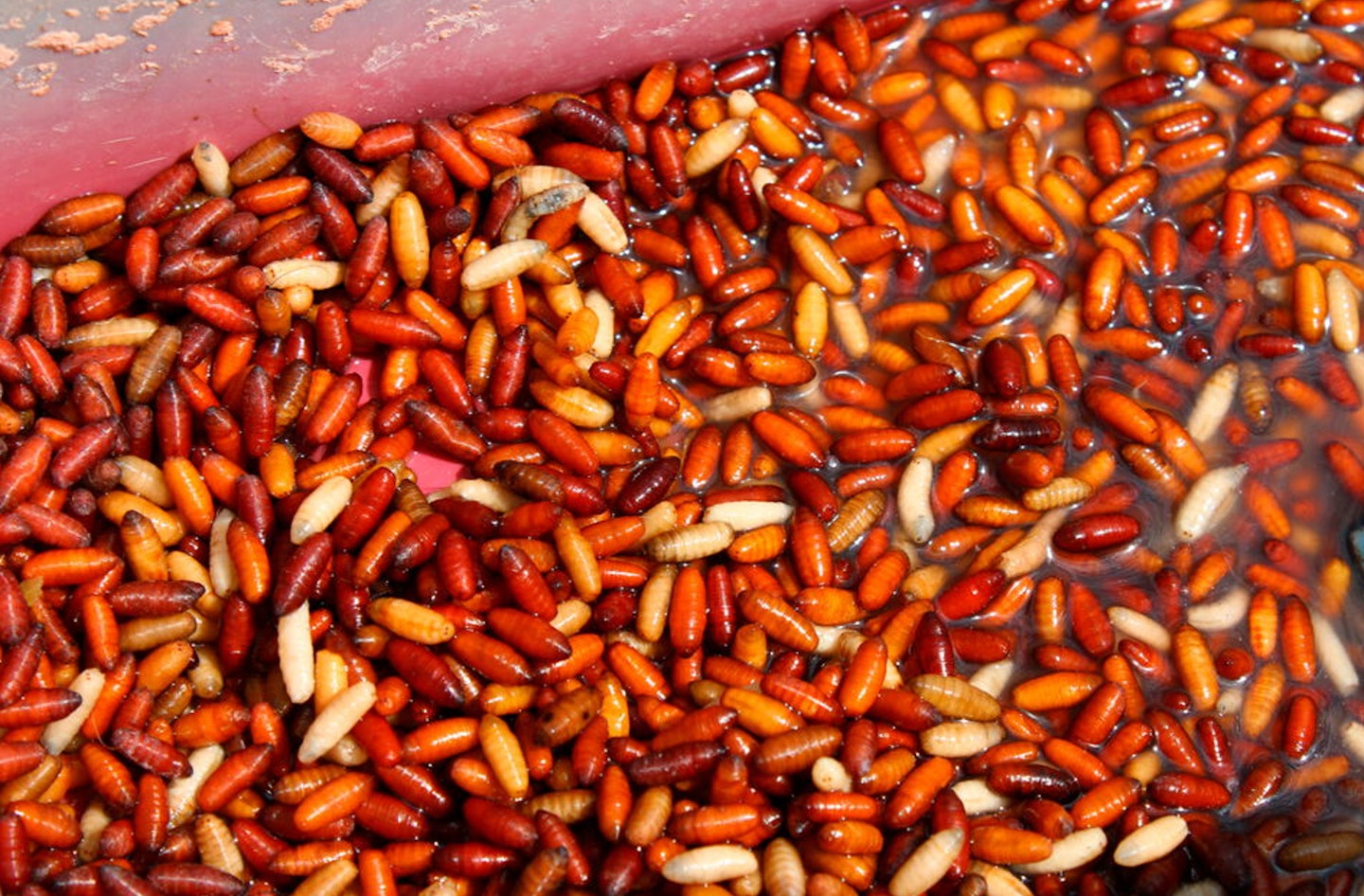
Create a stink
Picking a bait with lots of smell and flavour that will leak into the river is guaranteed to increase your chances of catching a winter barbel. The aroma travelling downstream in the flow will draw fish upstream towards your hookbait. Of course, you have to remember that at this time of year the fish have a drastically reduced appetite and a big bed of bait could easily put them off. Ideally, you want to create maximum attraction with minimum feed. This can be achieved by using strong smelling pastes or glugging your baits in pungent liquids that release masses of flavour but no actual food content.
YOU CAN FIND THE BEST LIQUID BAIT ADDITIVES IN OUR LATEST BUYER'S GUIDE.
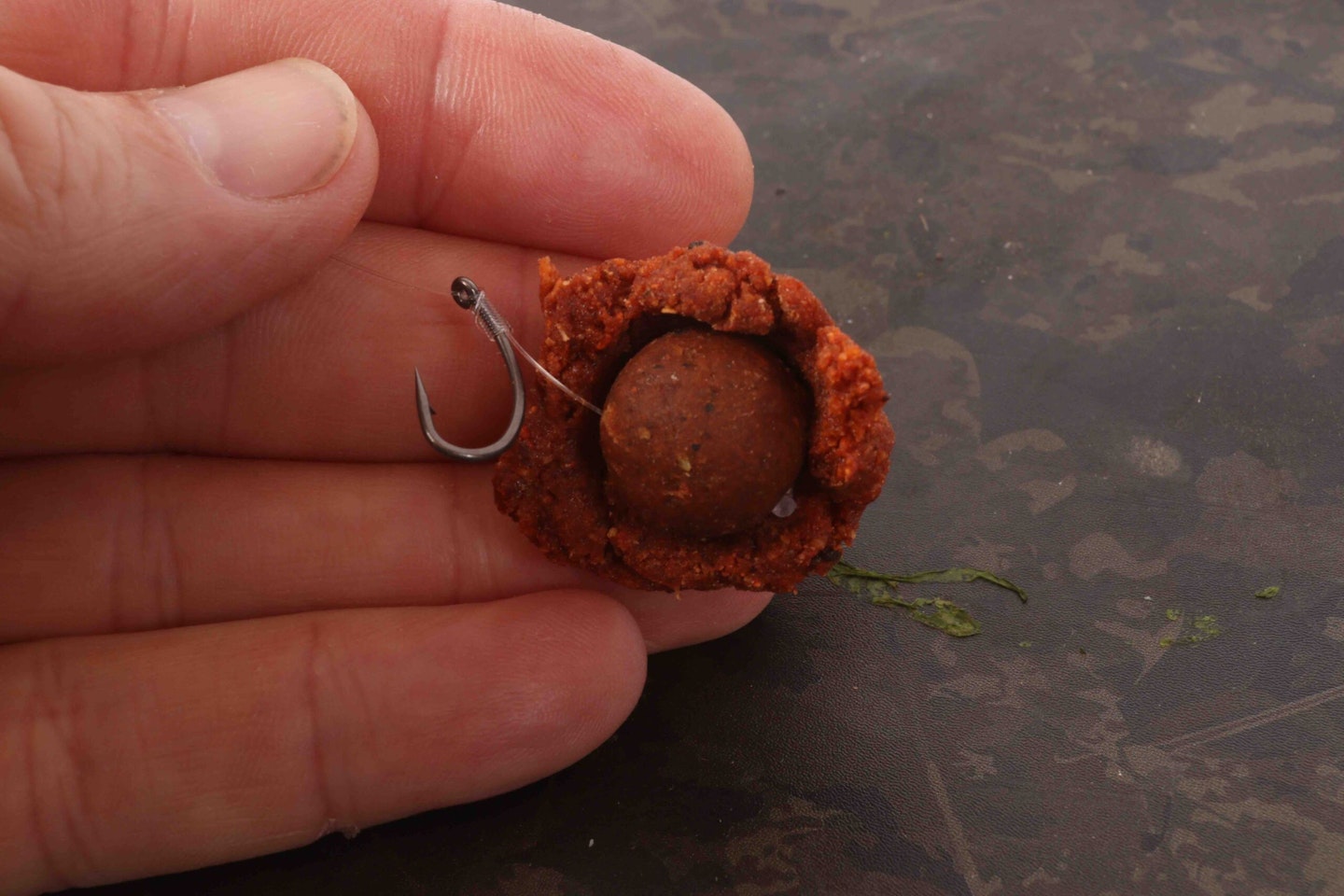
A two rod attack
When barbel fishing in winter, it can pay to use two rods. Cast one slightly downstream with a leger set-up and just a PVA bag of feed. The other should be cast almost directly in front of you with a cage feeder. This has several benefits. Firstly, it gets more bait into the swim. Some of this will remain in the area and some will be sent downstream towards where the leger rig is waiting. Secondly, it helps to catch fish that are a little more cautious. These specimens may sit away from the main bulk of feed and pick up morsels on the edge of the zone.
If you use a 2ft 6in hooklength, your hookbait will be the bit of bait sat away that they will take. Using a mix of crushed boilies and pellets in the feeder provides a fish attracting combination of flavour and movement. Aim to feed five feeders at the beginning to get a bed down and then recast a couple of times an hour to keep it topped up.
IF YOU NEED MORE TIPS FOR YOUR RIVER FISHING, CHECK OUT THIS SUPERB GUIDE.

Small hooks
Barbel are outstanding fighters but don’t let this fool you into thinking you must use big hooks. In daylight, they can be finicky feeders so scaling down the hook size can make a big difference. There are many small hooks that are strong enough in size 14 and 12 to cope with specimen barbel. They are ideal when using small baits such as 8mm pellets, mini boilies and single grains of corn.
Carry a range of feeders
Carry a wide range of feeders of varying sizes and weights so that you can select the right one for the job. Different weight feeders will be required depending on the depth and flow of the swim you are fishing, and different sizes allow you to vary the amount of bait that you introduce. Select your feeder carefully. As well as carrying feeders of different sizes and weights it pays to carry different types. This will allow you to vary the rate at which your feed comes out of the feeder.
A mesh feeder will empty much quicker than a traditional style feeder with just a few holes. If bites are coming soon after casting opt for a mesh feeder so that the bait empties quickly, otherwise it will still be full and empty across the river whilst you are playing a fish. If bites are slow it pays to use a slower release feeder to ensure bait is trickling past your hookbait for much longer.
YOU NEED GOOD TACKLE TO CAST HEAVY FEEDERS. CHECK OUT OUR GUIDE TO THE BEST BARBEL REELS.

Hide your line
Considering line angles going into the water and the concealment of the last few feet of line around the rig is important and often overlooked when targeting big barbel on heavily-fished stretches of river. The use of back leads (whether flying or threaded onto the mainline) can prove invaluable to keep the line out of the way.
NEED HELP PICKING THE RIGHT MAINLINE? CHECK OUT OUR BUYER'S GUIDE.

Work out where to fish
You won’t get as many chances of a bite during the winter so you need to ensure that you don’t waste any time fishing in the wrong areas. Thankfully, spots that hold barbel in the summer will often still hold barbel in the cold too. Deeper holes below shallow runs, obstructions in the water, overhanging trees and creases in the river are all worth targeting. Barbel love the safety which snags provide in the winter and can spends months at a time holed up in or around a particular set of snags, dead tree or submerged bush.
If you can find a swim that has more than one of the above mentioned features then you’re most likely onto a winner. It’s also worth spending time walking the river, even if you’re not fishing, and speaking to anglers that fish the stretch. If you’re friendly and polite they may point you in the right direction of swims that hold fish or at least provide a few more clues for you to investigate.

Pick the right river conditions
Keeping a close eye on the weather and the river conditions will increase your chances of catching a fish. If you turn up to a river when the level is rising or is in flood after an influx of cold rain, snow or sleet you will probably blank – that drop in temperature puts the fish right off. With this in mind then, try to time your session to coincide with the river starting to drop from its peak height; that way there’s also less rubbish in the water to catch on your lines and pull your rigs out of position.
There are plenty of monitoring stations positioned along many rivers with the information on levels readily available to be viewed online at websites such as www.riverlevels.uk. By keeping an eye on these you can make the decision on whether it’s worth venturing out from the comfort of your living room.
IF YOU WANT TO KNOW HOW TO CATCH A FLOODWATER BARBEL, READ OUR GUIDE FOR ALL THE HINTS AND TIPS YOU NEED.
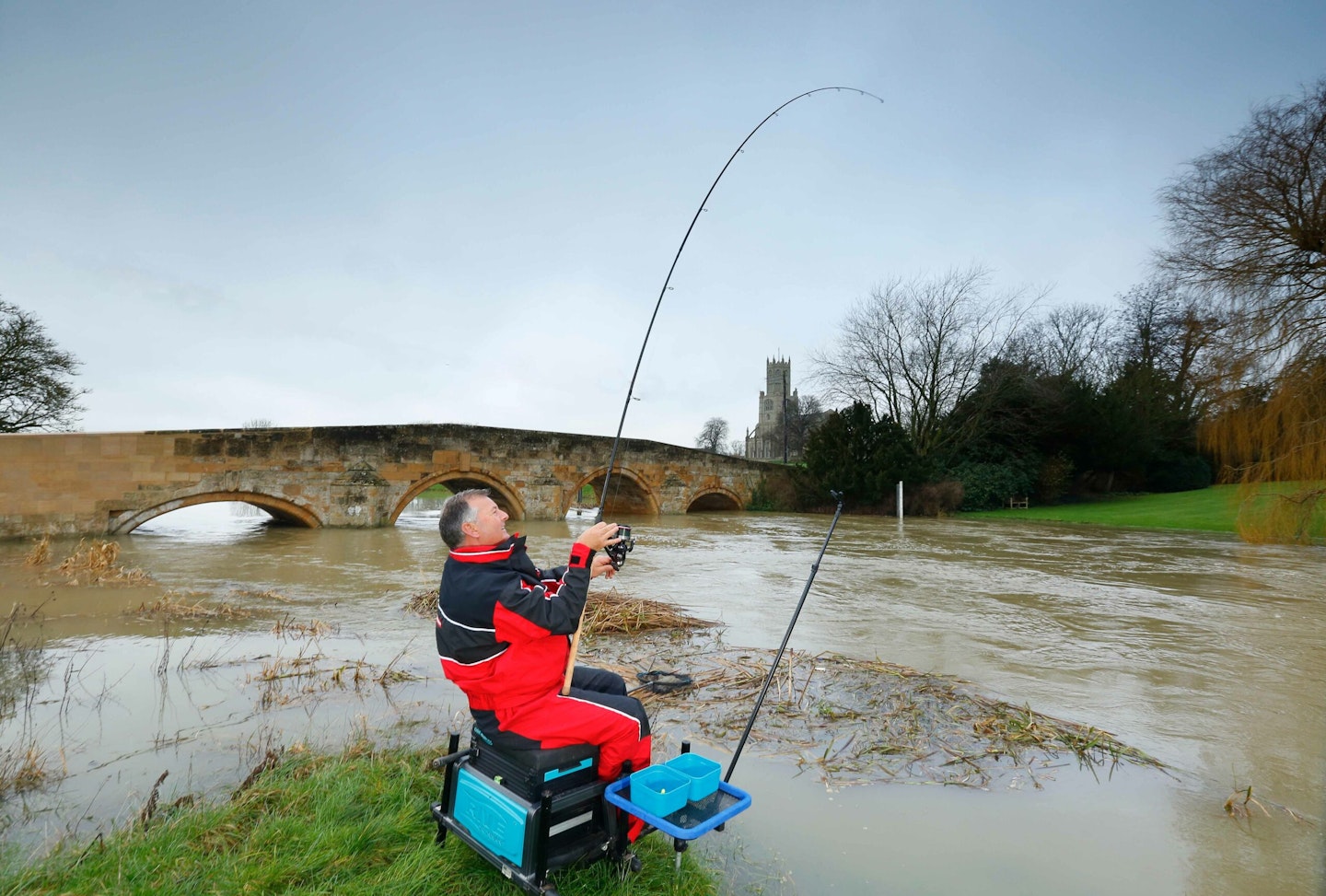
Give them an octopus
Barbel love boilies and they love maggots. So why not combine the both! Our rivers see a large number of boilies and so, although it wouldn’t be wise to feed large quantities of them in winter, it would be silly to completely dismiss them altogether. Tipping a boilie with a bunch of maggots creates something that looks like an octopus and is probably something most barbel won’t have seen before. This gives you the best of both worlds – the maggots provide a big visual effect while the boilie releases flavours and provides something the fish are familiar with.
